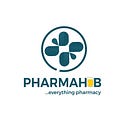The Future Pharmacy Model -
While pharmacy is practiced in diverse public and private settings, the pharmacy landscape is changing so fast. We observed major innovations which will certainly impact the traditional model of the pharmacy. The upcoming 5 years will see the future pharmacy driven by 2 disruptive innovations:
Organizational changes in the operational structure of the pharmacies (eg: online pharmacy, central-fill station)
Growing usages of technologies to support interactive and digital relationship with patients (eg: text messaging, video chat, electronic transmission of the prescriptions, etc)
The for-profit private sector structure of pharmacy has historically resulted in pharmacies standing somewhat apart from other health care organizations, attempting a delicate balance between being a “business” and a “health care provider”.
Successful change management in pharmacy is highly dependent upon these structures and as a result, highly divergent pathways to practice evolution have emerged.
1. Practice Model
New practice models are evolving to fundamentally shift the nature of practice by decoupling the compounding/dispensing/drug stewardship functions of the profession of pharmacy.
Online pharmacy is one of the technology advancement in creating huge demand in recent years. An E-Pharmacy is a pharmacy that operates over the internet by selling drugs, medicines & sending them to the customers. Internet making all the things easy & convenient. Patients can now buy use of prescription of registered medical practitioner order the medicines via use of internet & receive them at their own doorsteps. Though it is convenient to buy drugs online, it causes high risk of self-medication and misuse of drugs.
E-Pharmacies are a massive hit & more and more people are opting to use them rather than stroll down to local pharmacy. Nevertheless, whether these online Pharmacies is a boon or bane still remains questionable. It may seem convenient and cheap, but purchasing drugs online may expose the patient to serious health risks.
The unique role of the pharmacist in ensuring therapeutic appropriateness of all medications used by patients is well established; on-going monitoring of drug therapy is integral to the care provided by pharmacists. Ensuring, for example, that patients are not experiencing side effects of medications requires a pharmacotherapeutic knowledge base and skill set that is aligned with the education and training of pharmacists.
Traditional pharmacists have a unique opportunity during the refill process to engage in conversation with patients around therapeutic response, management of side effects, potential drug interactions and other topics of importance. Still, this unique relationship between pharmacists and patients is the core of a patient-care focus.Emerging trends, such as “central fill” are still oriented towards high-volume transactional dispensing practice. Central fill will have impacts on the numbers and types of pharmacists and pharmacy technicians required, and on the physical design of pharmacy itself. In the meantime, central fill are opportunities for pharmacists to focus more on their role as trusted advisor for the global health of their patients. It redesigned the structure and workflow systems so that care is organized, proactive, planned and followed up in a manner that is understood by the patient, can be better tailored to patient needs and can prevent or minimize drug therapy problems.
2. Growing usages of technologies:
The last 5 years have marked the emergence of secure text messaging and video chat technologies with patients. Innovative pharmacists are already using these technologies to offer drug therapy management and educate patients about vaccinations and point-of-care tests, in addition to medication follow-ups.
Technologies_Pharmacie
These tools can help pharmacists engage their existing patients by meeting them where they are, on their phones. By using an App, the patient receives personalized text messages and email reminders regarding its prescription refills. Likewise, patients with chronic diseases appreciate to connect with their pharmacist through their smartphone, to ask questions and receive advice.
These technologies will have an impact on the overall model of customer experience and increase the importance of connecting the physical and digital presence of the pharmacy. The adoption of telehealth has been tremendous due to the Covid-19 pandemic, thus opening the way to new opportunities for pharmacists; as well as the emergence of interactive communication platforms (eg: Ask your question to a pharmacist).
All these changes push to evolve towards a new pharmacy model that is more integrated into the healthcare system. A new pharmacy that will be “lean” and agile which allows it to accelerate its workflows and to diversify its offer of patient care services. The pharmacy of tomorrow will need to rely on new technologies to facilitate information sharing and collaborative activities related to optimizing the use of medicines for patients.
